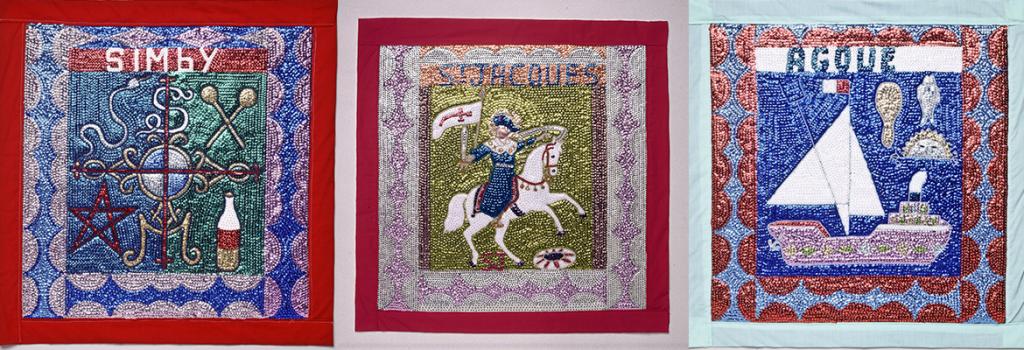
Vodou Flags
A collection of Vodou flags from Haiti, some of which can be seen hanging in the Africa section of the World Cultures Gallery at World Museum and at the International Slavery Museum.
This is part of the Africa collection.
World Museum holds a collection of fourteen sequinned Vodou flags, of which eight were especially commissioned in 2000 from the workshop of the master flag maker and Vodou priest (oungan) Silva Joseph. Six of Silva Joseph’s flags hang at the end of the Africa section of the World Cultures Gallery and lead visitors into the Americas section. Another four Vodou flags, made at Pierro Barra’s studio in Port-au-Prince, can be seen at the International Slavery Museum by the Albert Dock.
The vodou religion is practiced in various forms by many Haitians today. The numerous Vodou spirits are divided into two main groups or ‘nations’. The dominant ‘cool’ spirits, called Rada after Alladah, a town in the Republic of Benin, are considered helpful and wise. Petro spirits, on the other hand, are mainly associated with Kongo peoples of Central Africa, and are considered ‘hot’ and dangerous, but respond to the demands of a devotee if given the right offerings. Vodou flags are used as altar pieces to adorn altars dedicated to particular Vodou spirits or worn over the shoulders during Vodou ceremonies.
Haiti became the first independent republic in the Caribbean in 1804 after a slave revolution in French controlled Saint-Domingue. Saint-Domingue had constituted the western portion of the island of Hispaniola that Christopher Columbus had claimed for Spain in 1492. A few decades after Columbus arrived the indigenous Amerindian population had been virtually wiped out, mainly by diseases and brutal methods of labour exploitation introduced by Spanish colonists. The French gained control of the western portion of the island in 1664 and built a colonial plantation economy with the labour of enslaved Africans.
The Haitian revolution’s success partly depended on the ability of Saint-Domingue’s slave population to assert a strong independent African identity, which was rooted in the Vodou religion. Vodou developed in opposition to European oppression and provided slaves from many different ethnic backgrounds with a common cultural language.
